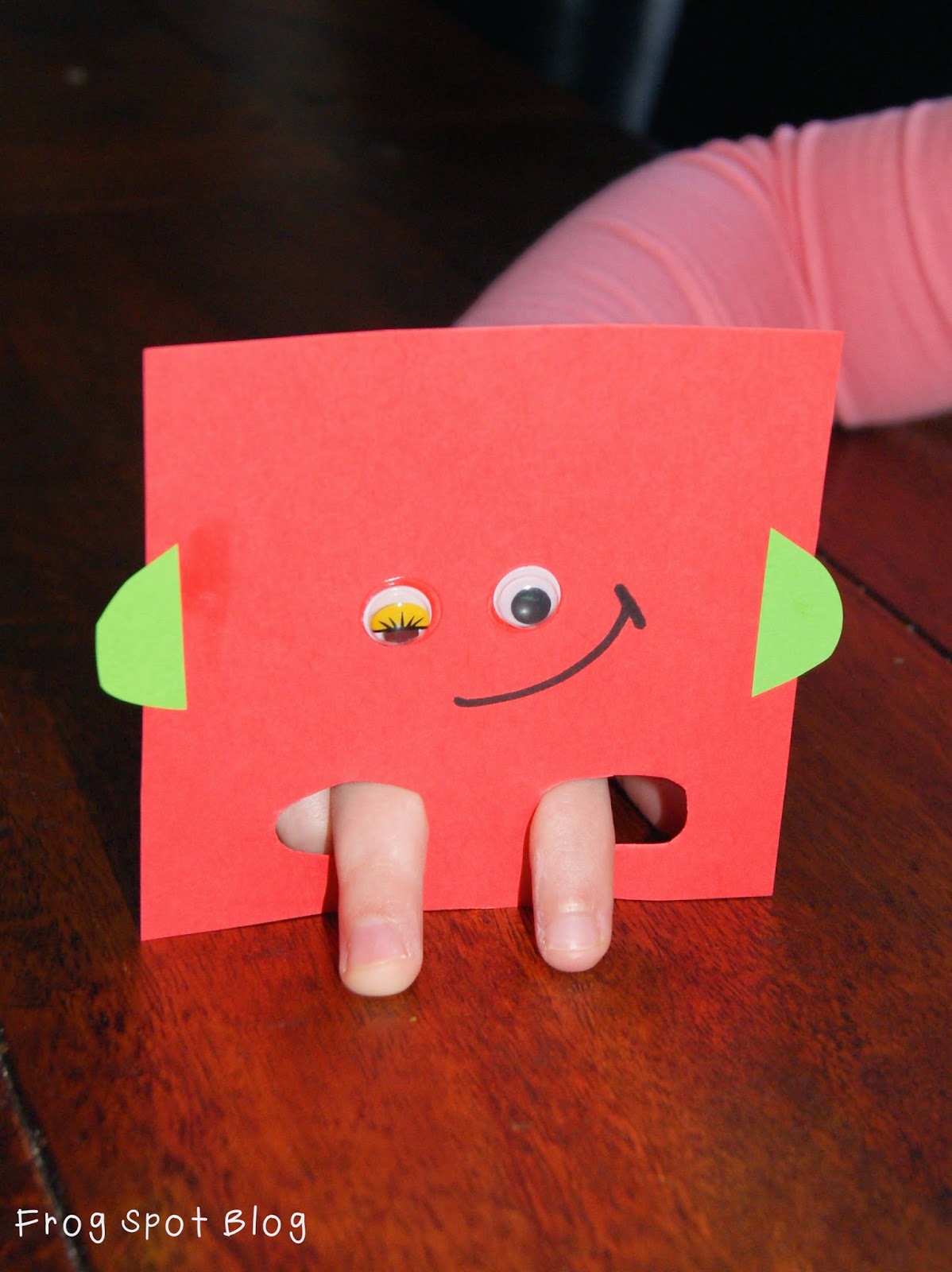Today I want to share with you a simple but fun idea for learning 2D shapes and their properties. It also encourages students to talk and build up their mathematical language.
Have your students cut some basic shapes from thin card. They can trace some templates, or wooden attribute shapes if you like. Alternatively, you could have them pre cut and ready to go.
You will need to assist your students with the cutting of finger holes at the bottom of their shape. You could let your students use a craft punch that has a large circle shape to easily punch out the holes. I don't have one yet, its on my wish list. The list I am still searching for (its incredibly long you see, and well hidden).
Your students can use coloured paper to add fun features to the puppets and also googly eyes.
Once all you students have a puppet - the mathematical discussion can begin. This lesson would be best carried out when you have already reviewed all the features of 2D shapes with your students. Perhaps you could have some posters displayed around the classroom to remind students of the features of each shape.
Model for the students some ideas before they have a turn of their own. Your students can work with a partner to create some 'shape talk'.
Here is a rough transcription of the shape talk my daughter and I had in preparation for this blog post:
Me: "Hi, I am Mr Triangle"
A: "Hi Mr Triangle, I am Mr Rectangle"
Me: "I like your green hat."
A: "I like your orange hat. Your eyes look funny too".
Me: "I have 3 sides and they are all straight"
A: "I have 4 sides and they are straight too".
Me: "I have a friend with 4 sides, he is a square"
A: I am like a square, but stretched out. I have 2 long sides.
Me: "I have 3 corners"
A: "They are called vertices"
Me: (picking myself up off the floor, cause I didn't know she knew that yet) "Wow, that is clever, how many do you have?"
A: "He he he, your eye just fell off".
Oh!.... the learning that can take place when students are allowed to talk and interact. Get them away from that smart board for a few minutes and get them talking, looking, and conversing with a real person! Ignore the noise and chatter for a while and focus on the good quality language (hopefully) being created!
Ideally, it would be good to pair up students with less knowledge, with a more confident students that can encourage some good questions and focus attention of important features. After a few minutes with one partner, ask your students to move on to a new partner. You will see your less-able students really grow in confidence as they use some of the ideas that they developed from working with their first partner.
Find more ideas for teaching 2D shapes, on my blog HERE





